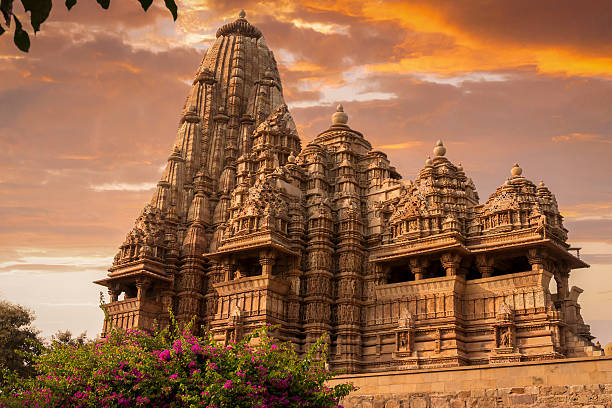Unveiling the Enchantment: 10 Unforgettable Facets of Khajuraho
Experience the rich history, captivating art, and cultural tapestry beyond the erotic sculptures

Exploring Khajuraho: 10 Dimensions of the Enchanting Temple City
Situated in the center of Madhya Pradesh, India, Khajuraho is an outdoor museum including several impressive temples. World travelers are drawn to these architectural wonders because of their exquisite carvings and sprinkling of sensual sculptures. But there's more to Khajuraho than first meets the eye. Explore these ten fascinating characteristics in greater detail:
1. The Legacy of a Dynasty: Khajuraho was the capital of the Chandela rulers, who constructed it between 950 and 1050 AD. With the contributions of all the rulers, the Chandela architectural style evolved into a diversified collection of temples.

2. Architectural Tapestry: The temples of Khajuraho are examples of the Nagara architectural style, which is distinguished by tall shikharas (spires) and elaborately carved exteriors. The temples honoring Jainism and Hinduism provide a window into the coexistence of the two religions during that time.
3. A Sculptural World: The sculptures are the real wonder, hidden beneath the architectural splendor. These intriguing works of art feature scenes from daily life as well as legendary animals, heavenly beings, and deities. Some, but not all, of the sculptures are sensual, arousing curiosity and discussion for ages.

4. Sculpting the Sacred: The statues exhibit superb craftsmanship. Visitors are in awe of the statues' lifelike expressions, finely detailed detailing, and elaborate floral patterns. The artists' employment of a special method gave the sandstone a glowing appearance.
5. A World Apart From the Erotic: Even if the sensual sculptures attract a lot of attention, it's important to comprehend their context. According to scholars, they symbolize sensuality, a celebration of life, and the significance of kama, or desire, which is one of the four objectives of human existence in Hinduism.
6. The Ruins That Whisper: In the past, Khajuraho had more than 85 temples. While the remnants of others tell tales of a great past, 22 stand gloriously today. The scenery is made more mysterious and intriguing by these ruins.

7. An Entirely Preserved Site: Acknowledging Khajuraho's artistic and cultural importance, UNESCO designated it as a World Heritage Site in 1986. For upcoming generations, this classification guarantees continued preservation efforts.
8. Sound & Light Exhibition: Experience Khajuraho's past with the spectacular light and audio display. Every evening, a show that weaves stories about the Chandela dynasty and the spirit of Khajuraho comes to life through music, dramatic lighting, and narration of the temples.
9. A Cultural Tapestry: Khajuraho has a thriving cultural scene that is always in motion. See traditional dance performances such as the fast footwork and storytelling components of Khajuraho Gaharana. Look for handcrafted mementos that highlight the artistic talent of the area in the local marketplaces.

10. Outside the Temples: Khajuraho has attractions outside its temples. See the largest Jain temple in India, Adinath Temple, which is located close. Take a wildlife safari at the Panna National Park or explore the Pandav Falls, a tumbling waterfall surrounded by rich vegetation.
With its magnificent architecture, alluring sculptures, and extensive history, Khajuraho entices visitors. Explore its depths and set off on a voyage that goes beyond the sensual to the core of a bygone period.











































































































































































































